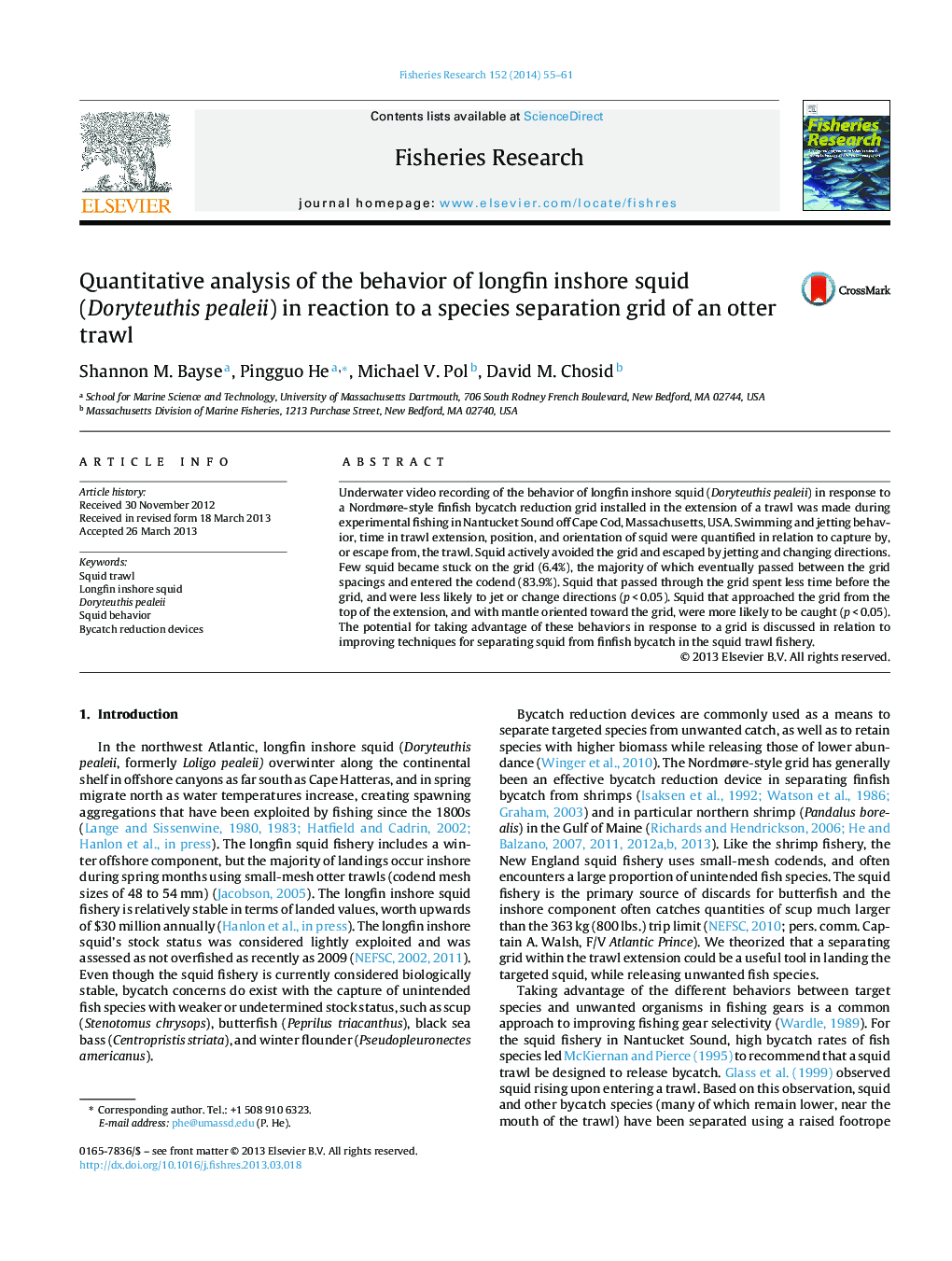| Article ID | Journal | Published Year | Pages | File Type |
|---|---|---|---|---|
| 4543064 | Fisheries Research | 2014 | 7 Pages |
•Underwater observations of squid behavior near a bycatch reduction grid in a trawl were made with three concurrent video cameras.•Quantitative video analysis of squid behavior near a separator grid was examined.•Squid actively avoided the separator grid by jetting and changing directions.•Few squid became stuck to the grid, with most stuck squid entering codend.•Squid position when exiting the funnel and body orientation in trawl extension affected squid passage through grid.
Underwater video recording of the behavior of longfin inshore squid (Doryteuthis pealeii) in response to a Nordmøre-style finfish bycatch reduction grid installed in the extension of a trawl was made during experimental fishing in Nantucket Sound off Cape Cod, Massachusetts, USA. Swimming and jetting behavior, time in trawl extension, position, and orientation of squid were quantified in relation to capture by, or escape from, the trawl. Squid actively avoided the grid and escaped by jetting and changing directions. Few squid became stuck on the grid (6.4%), the majority of which eventually passed between the grid spacings and entered the codend (83.9%). Squid that passed through the grid spent less time before the grid, and were less likely to jet or change directions (p < 0.05). Squid that approached the grid from the top of the extension, and with mantle oriented toward the grid, were more likely to be caught (p < 0.05). The potential for taking advantage of these behaviors in response to a grid is discussed in relation to improving techniques for separating squid from finfish bycatch in the squid trawl fishery.
